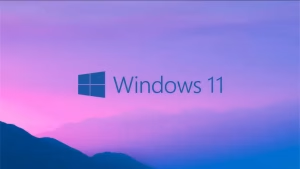Best Practices for Selecting Top Rated Prescription Applications in Healthcare

Understanding Prescription Applications
Definition and Purpose of top rated prescription applications
In the ever-evolving landscape of healthcare technology, prescription applications have emerged as vital tools for enhancing communication between healthcare providers and patients. These top rated prescription applications facilitate the prescription process by enabling healthcare professionals to digitally generate, manage, and distribute prescriptions securely. The core purpose of these applications is to streamline the prescription workflow, enhance patient adherence, and ensure safe medication management.
Additionally, these applications play a crucial role in improving healthcare access, particularly in telehealth settings, where patients can consult with doctors remotely. With functionalities that enable electronic prescriptions, real-time medication information, and pharmacy integration, doctors and patients can achieve a synergistic relationship, minimizing the potential for medication errors and improving overall patient care. For those interested in exploring the best options available, resources focusing on top rated prescription applications are essential for making informed decisions.
Key Features to Look For
When assessing top rated prescription applications, certain features stand out as critical for their effectiveness and usability. Key attributes include:
- User-friendly Interface: The design should be intuitive, enabling users to navigate easily through functionalities without requiring extensive training.
- Electronic Prescription (eRx) Capability: This feature allows healthcare providers to send prescriptions directly to pharmacies electronically, reducing the chance of errors associated with handwritten notes.
- Medication Database: Access to a comprehensive database of medications aids in verifying drug interactions, dosages, and alternatives, which is vital in ensuring patient safety.
- Patient Management Tools: These tools enable doctors to keep track of patient medications, treatment histories, and follow-up appointments, enhancing personalized care.
- Integration with Pharmacy Systems: Smooth integration allows prescriptions to be processed with minimal delays, improving turnaround times for patients needing medications.
- Data Security Compliance: Given the sensitive nature of health information, applications must comply with HIPAA and other regulatory standards to protect patient data.
How Prescription Applications Enhance Patient Care
Prescription applications are pivotal in enhancing patient care through several avenues:
- Increased Adherence: By offering medication reminders and monitoring tools, these applications help patients stay on track with their prescriptions, which is essential for effective treatment.
- Enhanced Communication: Direct messaging features allow for timely communication between patients and healthcare providers, ensuring that concerns are addressed quickly.
- Accessible Medical Records: Patients can have readily available access to their medication history, enabling informed discussions with their healthcare providers during consultations.
- Remote Consultations: With the integration of telehealth capabilities, patients can receive guidance and prescriptions without needing to visit a clinic, especially beneficial for individuals in remote areas.
Evaluating Top Rated Prescription Applications
Criteria for Assessment
Evaluating prescription applications goes beyond mere features; it’s about understanding their real-world efficacy. The following criteria are essential for assessment:
- Usability: Assess how easily users can navigate the application and whether the features enhance their workflow rather than complicate it.
- Customer Support: Available support options can significantly influence user experience. 24/7 access, helpful resources, and responsiveness are key indicators of a reliable application.
- Cost Efficiency: Consider if the application provides good value for its pricing compared to its features and benefits.
- User Adoption Rates: An application that enjoys widespread use among healthcare providers may reflect its efficacy and acceptance within the medical community.
- Feedback and Updates: A responsive development team that addresses user concerns through regular updates and improvements is crucial for long-term viability.
User Reviews and Feedback
User reviews and feedback are invaluable for potential users assessing prescription applications. Understanding experiences from healthcare providers and patients can illuminate strengths and weaknesses not easily seen from a marketing perspective. Considerations include:
- Ease of Integration: Feedback often highlights whether an application integrates well with existing systems, including institutional EMRs.
- Performance Consistency: Understanding if the application performs reliably over time and whether users encounter frequent outages or bugs is crucial.
- Real-world Effectiveness: Reviews can reveal insights regarding patient outcomes related to adherence and safety.
Integration with Other Healthcare Tools
Effective prescription applications should ideally integrate with a suite of other healthcare tools to maximize their utility. Consider these integration aspects:
- Electronic Health Records (EHR): Linking with EHR systems enables quick access to patient data and history, enhancing the decision-making process for prescriptions.
- Pharmacy Management Systems: Integration with pharmacy systems facilitates real-time prescription processing, reducing wait times for patients receiving medications.
- Diagnostic Tools: Incorporating diagnostic capabilities directly within the application can enhance immediate prescription accuracy based on symptoms presented.
Challenges in Using Prescription Applications
Common User Concerns
While prescription applications offer numerous benefits, users commonly express concerns that could impact their usability. Key challenges include:
- Training Requirements: Healthcare staff may require robust training to utilize these applications effectively, which can initially slow down adoption.
- System Compatibility: Applications that do not seamlessly integrate with existing systems can cause frustration and inefficiencies.
- Potential for Errors: Despite digital processes, errors can still occur, especially if users do not thoroughly understand the application’s features.
Privacy and Data Security Issues
Data privacy and security remain a primary concern for healthcare providers and patients alike. As prescription applications handle sensitive personal information, several issues warrant attention:
- Regulatory Compliance: Ensuring that applications meet the requirements set forth by regulations such as HIPAA is fundamental for protecting patient data.
- Data Breaches: Potential for data breaches remains a significant concern, prompting users to carefully assess a provider’s security measures.
- Transparency in Data Handling: Applications should clearly outline how patient data is collected, used, and shared with third parties to build trust.
Technical Difficulties and Solutions
Technical issues can affect the functionality of prescription applications. Common difficulties include:
- Anomalies in Functionality: Users may encounter bugs or errors during usage. Ongoing support and quick updates can mitigate prolonged disruptions.
- Internet Connectivity: Applications relying heavily on internet connectivity may present problems in areas with limited access. Offline capabilities are essential for addressing this barrier.
- Device Compatibility: Users may experience issues if applications do not function across different devices and operating systems. Ensuring compatibility and providing multi-platform support can enhance user experience.
Success Stories with Top Rated Prescription Applications
Case Studies from Healthcare Professionals
Numerous healthcare professionals have reported enhanced efficiencies since incorporating top rated prescription applications into their practices. Noteworthy case studies include:
- Reduced Prescription Errors: A busy clinic utilizing an electronic prescription application reported a decrease in errors due to legibility, with physicians able to send prescriptions directly to pharmacies.
- Improved Patient Satisfaction: By adopting an integrated patient management tool, a healthcare provider noted improved patient engagement levels, resulting in better adherence rates.
- Streamlined Workflow: Providers using comprehensive prescription applications have experienced quicker patient processing times, allowing for more face-to-face interaction and better care delivery.
Patient Experiences and Testimonials
Patient testimonials also shed light on the transformative experiences made possible through the use of these applications. Experiences shared include:
- Convenience: Patients appreciate the ability to receive prescriptions electronically, eliminating the need for paper prescriptions and reducing waiting time.
- Reminders and Alerts: Many patients praise reminder notifications that prompt them to take medications as prescribed, attributing it to increased adherence rates.
- Easy Refill Requests: Patients have expressed satisfaction with simplified refill processes, allowing them to request medications directly through the application.
Before and After: Impact Analysis
Analysis of implementations of top rated prescription applications shows tangible effects on healthcare delivery:
- Pre-Implementation Challenges: Prior to implementation, many practices faced high rates of missed appointments and prescription declines due to challenges in managing medication schedules.
- Post-Implementation Outcomes: After adopting a comprehensive prescription application, practices often observed improved patient retention rates and enhanced appointment attendance due to better communication and medication adherence.
- Quantifiable Improvements: Metrics such as reduced error rates and increased patient engagement indicated a positive shift, demonstrating the effectiveness of these applications in practice.
Future Trends in Prescription Applications
Innovative Features on the Horizon
Looking ahead, the evolution of prescription applications continues to promise innovative features aimed at enhancing user experience and safety. Anticipated developments include:
- Personalized Medicine Integration: Future applications may offer features that customize medication based on individual genetic profiles, leading to more effective treatment plans.
- Enhanced Telehealth Features: As virtual care expands, applications may incorporate advanced video consultation capabilities, allowing prescriptions to be issued in real-time during consultations.
- Advanced Analytics: Predictive analytics features could emerge, assisting healthcare providers in forecasting patient needs based on historical data, thereby improving preventive care.
The Role of AI and Machine Learning
Artificial Intelligence (AI) and Machine Learning (ML) stand to revolutionize the functionality of prescription applications. Potential roles include:
- Smart Medication Reminders: By analyzing patient data, AI could offer tailored reminders and track adherence rates, enhancing personalized patient engagement.
- Drug Interaction Alerts: AI can provide real-time alerts regarding potential drug interactions, greatly reducing the risk of adverse reactions.
Predictions for the Next Decade
The future promises distinct advancements in prescription applications that will further reshape the healthcare landscape:
- Interoperability Standards: Improved integration standards across platforms may create seamless experiences for healthcare providers and patients alike.
- Patient Empowerment: As applications become more advanced, patients will likely take on larger roles in managing their health through these tools, leading to more proactive healthcare participation.
- Regulatory Innovations: Anticipated regulatory developments may yield new guidelines that ensure patient data security while promoting technological advancements in prescription management.







